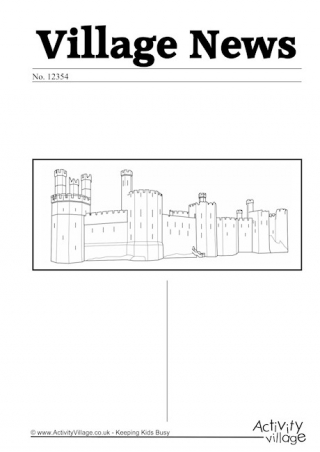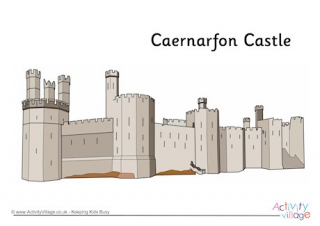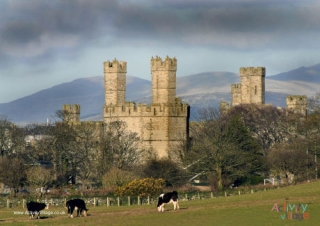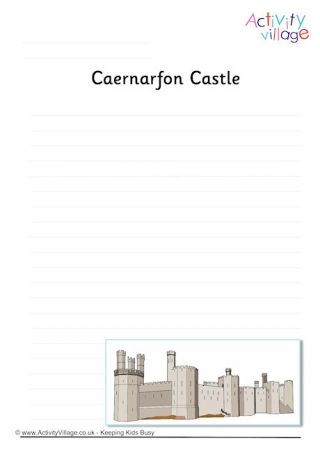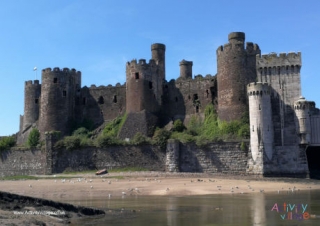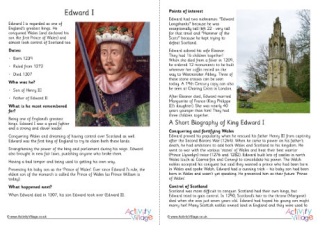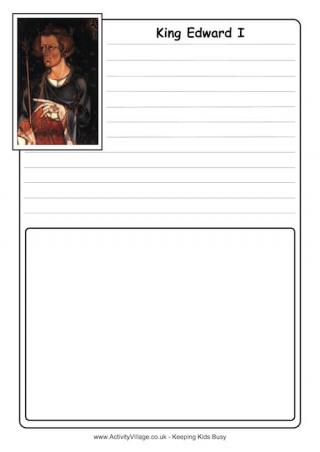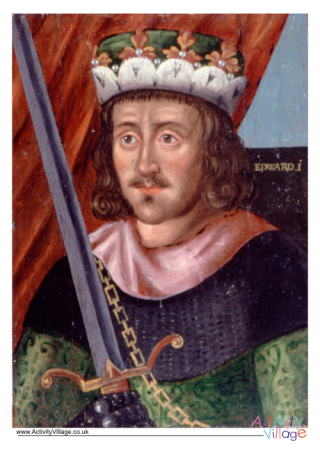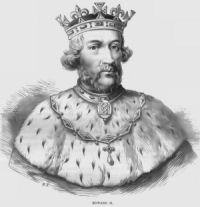Edward I is regarded as one of England's greatest kings. He conquered Wales (and declared his son the first Prince of Wales) and almost took control of Scotland too.
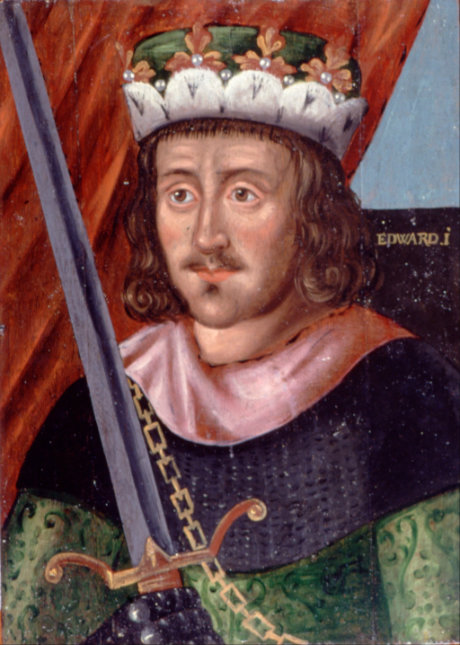
Dates:
- Born 1239
- Ruled from 1272
- Died 1307
Who was he?
What is he most remembered for?
- Being one of England’s greatest kings. Edward I was a good fighter and a strong and clever leader.
- Conquering Wales and dreaming of having control over Scotland as well. Edward was the first king of England to try to claim both these lands.
- Strengthening the power of the king and parliament during his reign. Edward also brought in new fair laws, punishing anyone who broke them.
- Having a bad temper and being used to getting his own way.
- Presenting his baby son as the ‘Prince of Wales’. Ever since Edward I’s rule, the eldest son of the monarch is called the Prince of Wales (as Prince William is today).
What happened next?
When Edward died in 1307, his son Edward took over (Edward II).
Points of interest
- Edward had two nicknames: "Edward Longshanks" because he was exceptionally tall (6ft 22 - very tall for that time) and "Hammer of the Scots" because he kept trying to defeat Scotland.
- Edward adored his wife Eleanor. They had 16 children together! When she died from a fever in 1209, he ordered 12 monuments to be built wherever her coffin rested on the way to Westminster Abbey. Three of these stone crosses can be seen today. A 19th Century copy can also be seen at Charing Cross in London.
- After Eleanor died, Edward married Marguerite of France (King Philippe III’s daughter). She was nearly 40 years younger than him! They had three children together.
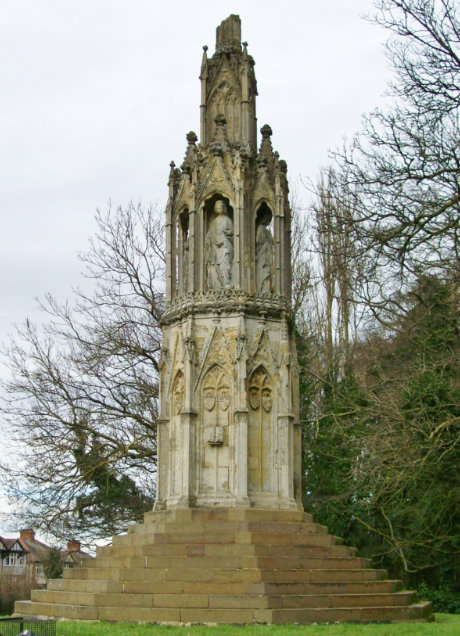
The Eleanor cross at Hardingstone
A Short Biography of King Edward I
Conquering and fortifying Wales
Edward proved his popularity when he rescued his father Henry III from captivity after the Second Barons War (1264). When he came to power on his father’s death, he had ambitions to add both Wales and Scotland to his kingdom. He went to war with the various ‘states’ of Wales and beat their best warrior (Prince Llywelyn) twice (1276 and 1282). Edward built lots of castles in north Wales (such as Caernarfon and Conwy) to consolidate his power. The Welsh nobles accepted his conquest but said they wanted a prince who had been born in Wales and spoke Welsh. Edward had a cunning trick – his baby son had been born in Wales and wasn’t yet speaking. He presented him as their future ‘Prince of Wales’.
Control of Scotland
Scotland was more difficult to conquer. Scotland had their own kings, but Edward tried to gain control. In 1290, Scotland’s heir to the throne (Margaret) died when she was just seven years old. Edward had hoped his young son might marry her! Many Scottish nobles owned land in England and they were used to Edward taking charge. Edward was asked to decide on the next heir when King Alexander III of Scotland died. This was Edward’s chance to seize control, and he chose John Balliol, someone he could boss around.
Scottish Wars of Independence
Edward expected John Balliol to support his plans to invade France, but when John declared friendship with France by signing a treaty (the Auld Alliance 1295), Edward was furious. He raised an army and invaded Scotland the following year. This was the start of the Scottish Wars of Independence. Edward defeated the Scots at the Battle of Dunbar and managed to steal the Stone of Scone (also known as the ‘Scottish Stone of Destiny’) where Scottish kings were crowned. He used this for a new coronation throne at Westminster Abbey in London. But the Scots were determined to hold onto their power. A fierce warrior called William Wallace led the Scots to victory at the Battle of Stirling Bridge in 1297, but the following year Wallace was defeated at Falkirk. Edward had Wallace executed, but then faced opposition from Scotland’s new king Robert Bruce. In 1307, Edward was marching to Scotland with a large army to invade again when he got sick and died. He had asked that his body not be buried until Scotland was conquered, but this wasn’t possible! He was buried in Westminster Abbey.
Parliament becomes stronger
Parliament grew in strength during Edward’s reign and he continued Simon de Montfort’s policy of encouraging ordinary people to be representatives (the origin of the House of Commons). In 1297, he also reaffirmed the principles of the Magna Carta in the ‘Confirmation of the Charters’.
Even great kings do bad things...
Edward had a dark side to his reign, however. To finance his wars to conquer Wales, he taxed Jewish moneylenders. These battles were costly and soon the money ran out. When the Jews couldn’t lend any more, they were accused of being disloyal to the king and many were arrested or even executed. Edward finally forced Jews out of England in 1290 (and they weren’t allowed back again until 1655).
Our Edward I Printables



